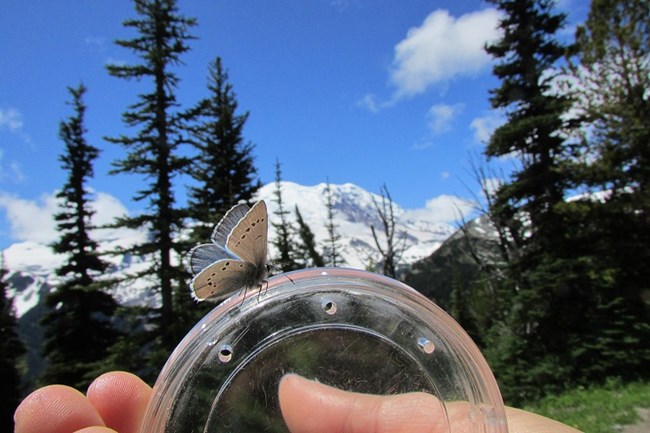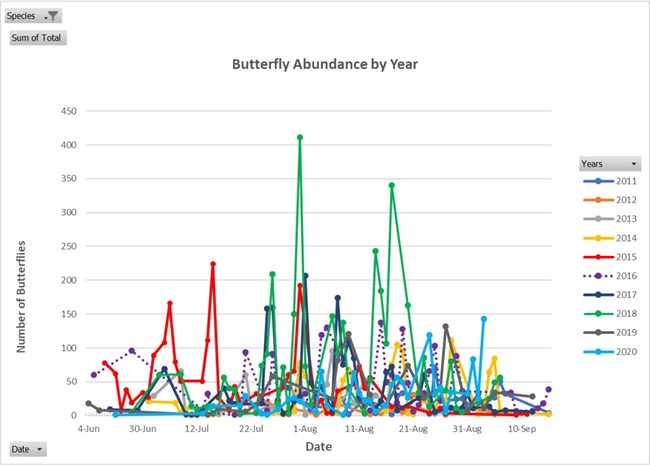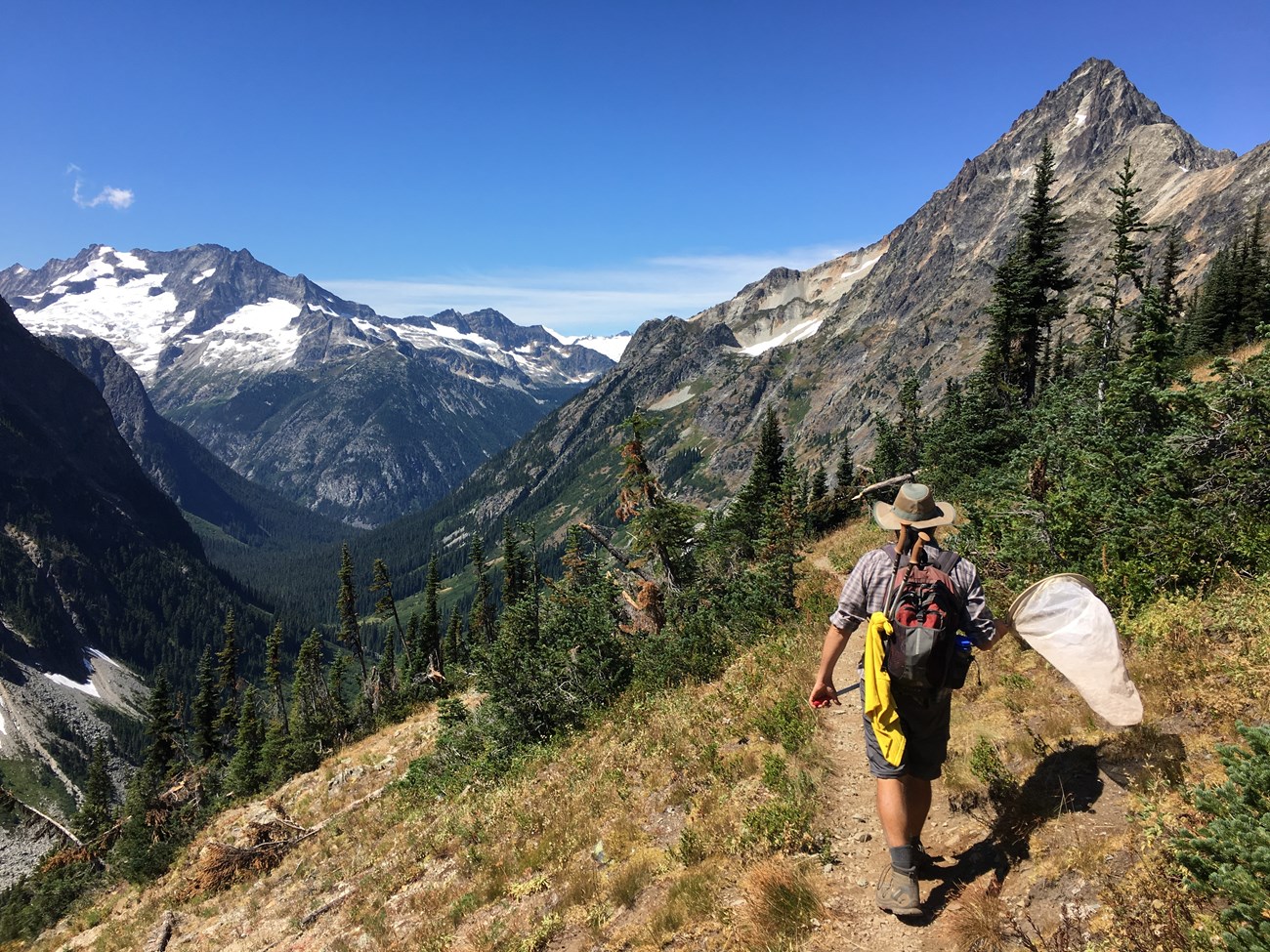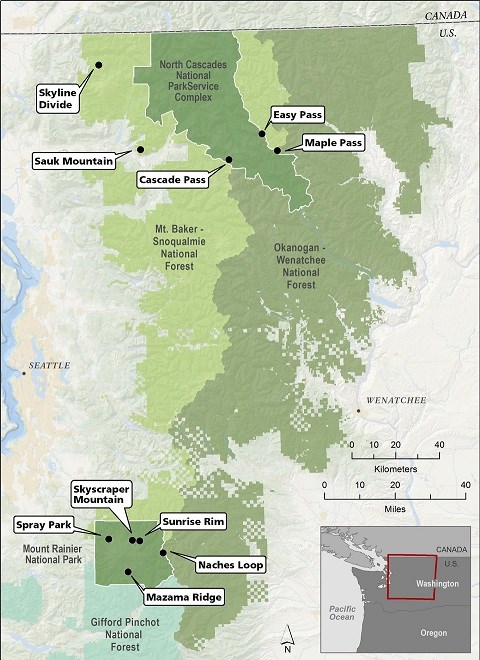
The Cascades Butterfly Project is a long-term monitoring project in which volunteer community scientists document butterfly abundances and plant flowering times in subalpine meadows to learn how climate change is altering ecosystems. Surveys are conducted on ten routes in North Cascades National Park, Mount Baker-Snoqualmie National Forest, Okanagan-Wenatchee National Forest, and Mount Rainier National Park. 
Crews have documented 57 butterfly species on survey routes. Some years, such as 2015, had early emergence or flight times. 2015 (depicted in red on the graph to the left) was a very warm, dry summer following a winter with low snow pack. Most other years had larger peaks in late July or early August. 2018 (depicted in green) had higher numbers of butterflies than all other years. 
We are looking for volunteers to help on this project!
Photo-inventories
There are ten permanent survey routes located in the four study areas. Each survey route is 1-km in length and is surveyed at least one time per week between snowmelt and mid-September. Volunteers document every butterfly that flies along the route and flowering of a select number of plants (see the map for survey routes). If you are interested in learning butterfly identification in the field and learning scientific protocol, this is the project for you. Contact us to be added to the mailing list. |
Last updated: June 16, 2021
